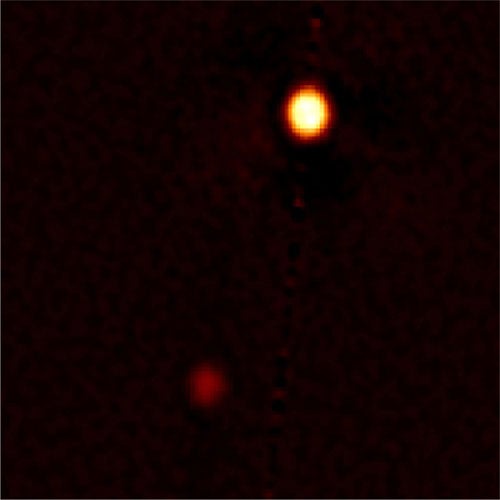“The Pluto-Charon result is of timely interest to those of us wanting to understand the orbital dynamics of this pair for the 2015 encounter by NASA’s New Horizons spacecraft,” said Steve Howell from the NASA Ames Research Center in Moffett Field, California. In addition, Howell notes that NASA’s Kepler mission, which has already proven a powerful exoplanet discovery tool, will benefit greatly from this technique.
Kepler identifies planet candidates by repeatedly measuring the change in brightness of more than 150,000 stars to detect when a planet passes in front of, or affects the brightness of, its host star. Speckle imaging with the Gemini Telescope will provide Kepler’s follow-up program with a doubling in its ability to resolve objects and validate Earth-like planets. It also offers a 3- to 4-magnitude sensitivity increase for the sources observed by the team. That’s about a 50-fold increase in sensitivity in the observations Howell and his team made at Gemini. “This is an enormous gain in the effort underway to confirm small Earth-size planets,” Howell said.
To institute this effort, Howell and his team, which included Elliott Horch from Southern Connecticut State University, New Haven; Mark Everett from the National Optical Astronomy Observatory; and David Ciardi from NASA’s Exoplanet Science Institute/Caltech in Pasadena, California, temporarily installed a camera called the Differential Speckle Survey Instrument (DSSI) among the suite of instruments mounted on the Gemini Telescope.
“This was a fantastic opportunity to bring DSSI to Gemini North this past July,” said Horch. “In just a little over half an hour of Pluto observations, collecting light with the large Gemini mirror, we obtained the best resolution ever with the DSSI instrument — it was stunning!”
The resolution obtained in the observations, about 20 milliarcseconds, easily corresponds to separating a pair of automobile headlights in Providence, Rhode Island, from San Francisco, California. To achieve this level of definition, Gemini obtained a large number of quick “snapshots” of Pluto and Charon. The researchers then reconstructed them into a single image after subtracting the blurring effects and ever-changing speckled artifacts caused by turbulence in the atmosphere and other optical aberrations. With enough snapshots — each image was exposed for only 60 milliseconds, or about 1/20 of a second — only the light from the actual objects remains constant, and the artifacts reveal their transient nature, eventually canceling each other out.
DSSI was built at SCSU between 2007–2008 as a part of a United States National Science Foundation Astronomical Instrumentation grant and mounted on the Gemini North Telescope for a limited observing run. The instrument is likely to return to Gemini North for observations in mid-2013 for general user programs from across the international Gemini partnership.










